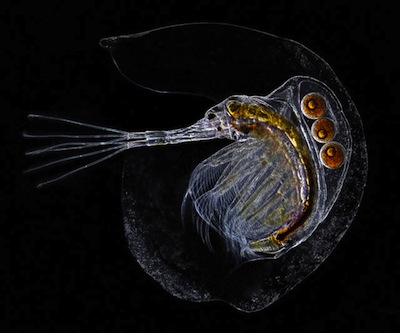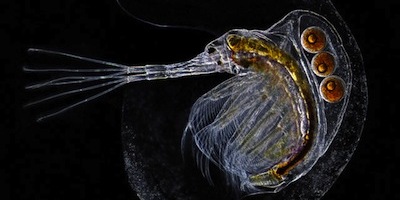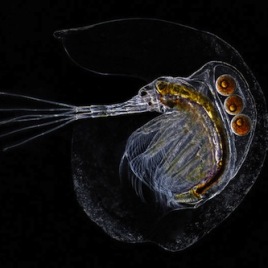
A loss of calcium in freshwater lakes due to acid rain leads to a reduction in hard-shelled crustaceans and an increase in jelly-covered creatures like this Holopedium animal (Photo credit: Ian Gardiner / E-Fauna BC. Used with special permission of the photographer.)
A strange jelly-covered organism is taking over various lakes in Canada, and the cause is a kind of ‘aquatic osteoporosis’ due to low calcium levels, according to a new study. Researchers studied two kinds of tiny crustaceans about 1 mm or less in size: Daphnia – AKA water fleas – have a hard shell, while Holopedium surround themselves in a ball of a jelly-like substance.
Data from 8 well-studied lakes in Ontario show that when calcium levels are reduced (a legacy of acid rain) the hard-shelled Daphnia can’t grow their shells and go into decline. The leftover food they would have eaten leads to an increase in jelly-covered Holopedium.
Large blooms of Holopedium can be a nuisance by clogging water filters. Additionally they also disrupt the food web because they are harder for predators to catch and less nutritious than Daphnia.
Evidence from 36 Ontario lakes and 48 lakes in Nova Scotia show that this effect is widespread and correlated with acid rain deposition going back several decades.
Original research paper published in Proceedings of the Royal Society B on November 18, 2014.
Names and affiliations of selected authors

